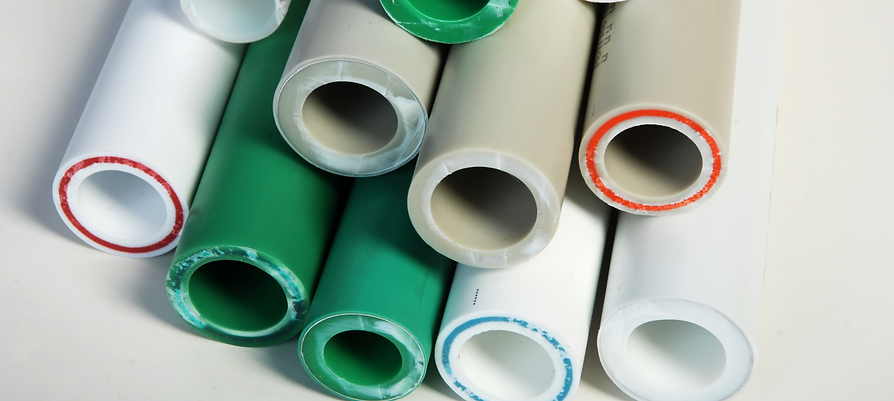.png)
How Recycled Plastics Are Transforming Industries
When you think about recycled plastics, packaging likely comes to mind first—bottles, containers, and wraps dominate the conversation. For decades, this has been the primary use case driving demand for recycled PET, HDPE, and other common plastics.
However, the story doesn’t end there. As sustainability demands grow and innovation accelerates, recycled plastics are finding their way into a surprising range of industries beyond packaging. These applications not only help reduce waste and carbon footprints but also open doors to new manufacturing possibilities and cost efficiencies.
This article explores some of the most unexpected sectors adopting recycled plastics, highlighting how these materials are reshaping industries and helping to build a more circular economy.
Most Recycled Plastic Goes to Packaging
.png)
Products like PET bottles are collected, cleaned, and reprocessed back into packaging-grade resins.
Recycled plastics have historically been synonymous with packaging materials. PET bottles and HDPE containers are collected, cleaned, and reprocessed back into packaging-grade resins. This cycle is well established worldwide and forms the backbone of many recycling programs.
It’s estimated packaging accounts for roughly 60-70% of recycled plastic use globally. This vast demand has driven significant infrastructure development and technological advancements in recycling. Yet, the reliance on packaging alone limits the potential of recycled plastics.
As companies and regulators push for more sustainable practices, there is a growing focus on expanding recycled plastic use into other, less obvious industries. This shift helps diversify demand and stimulates new markets for recycled materials, increasing the economic viability and environmental benefits of recycling.
Construction and Building Materials
.png)
Recycled plastics are used in insulation boards and piping, improving thermal performance while reducing environmental impact.
One of the fastest-growing applications of recycled plastics is in construction. Traditional building materials like wood and concrete face increasing scrutiny due to resource extraction, deforestation, and carbon emissions. Recycled plastics offer a durable, lightweight, and weather-resistant alternative in several areas.
Common applications include
-
Plastic Lumber and Composite Decking: Often made by blending recycled plastics with wood fibers, plastic lumber resists rot, insects, and moisture far better than traditional wood. This results in longer-lasting decks, fences, and outdoor furniture.
-
Insulation and Pipe Systems: Recycled plastics are used in insulation boards and piping, improving thermal performance while reducing environmental impact.
-
Roofing and Panels: Plastic roofing materials and siding panels made from recycled plastics provide resilience against weather and wear.
A study by the U.S. Environmental Protection Agency (EPA) found that using recycled plastic lumber in construction reduces demand for virgin timber and lowers greenhouse gas emissions by up to 50% compared to wood alternatives.
This market is expanding rapidly, with estimates suggesting recycled plastics will account for 10-15% of construction material inputs within the next decade. The environmental benefits combined with durability and low maintenance costs are driving adoption.
Automotive Industry
.png)
Seat cushions, carpets, door panels, and dashboard parts increasingly incorporate recycled PET and HDPE fibers.
The automotive sector is another surprising but rapidly growing user of recycled plastics. Automakers are under increasing pressure to improve fuel efficiency and reduce vehicle weight, and recycled plastics help meet these goals.
Uses in vehicles include
-
Interior Components: Seat cushions, carpets, door panels, and dashboard parts increasingly incorporate recycled PET and HDPE fibers.
-
Bumpers and Under-the-Hood Parts: Recycled plastic resins are engineered to meet safety and durability standards for external and internal vehicle parts.
-
Sound Insulation and Air Filters: Lightweight recycled plastic materials help reduce noise and improve air quality inside vehicles.
According to a report by Grand View Research, the global recycled plastics market in the automotive sector is projected to reach $7.2 billion by 2030, growing at a CAGR of over 7%. The shift toward electric vehicles and stricter environmental regulations only accelerate this trend.
Using recycled plastics reduces the reliance on virgin fossil fuels and decreases vehicle emissions throughout the manufacturing process, aligning with automakers’ sustainability goals.
Textiles and Apparel
.png)
Major apparel companies incorporate recycled fibers to reduce environmental impact and appeal to eco-conscious consumers.
Perhaps one of the most visible uses of recycled plastics outside packaging is in the textile industry. Recycled PET bottles and other plastic waste are converted into polyester fibers used extensively in clothing, upholstery, and industrial fabrics.
Highlights include
-
Activewear and Outdoor Gear: Many brands use recycled polyester to create moisture-wicking, durable, and lightweight garments for athletes and outdoor enthusiasts.
-
Fast Fashion and Everyday Apparel: Major apparel companies incorporate recycled fibers to reduce environmental impact and appeal to eco-conscious consumers.
-
Home Textiles: Rugs, curtains, and upholstery fabrics increasingly use recycled polyester blends.
Each ton of recycled polyester can save around 7,000 gallons of water and reduce CO2 emissions by up to 75% compared to virgin polyester production, according to Textile Exchange’s 2022 report.
This sector illustrates how recycled plastics can take on new lives far beyond their initial purpose, contributing to both waste reduction and resource conservation.
Electronics and Appliances
.png)
As consumer demand grows for eco-friendly products, manufacturers are integrating recycled materials into the design of electronics.
Electronics manufacturers are also tapping into recycled plastics to meet sustainability goals. While this application may be less visible to consumers, it is crucial for reducing the environmental footprint of gadgets and appliances.
Typical uses
-
Casings and Housings: Recycled plastics provide sturdy, lightweight shells for smartphones, laptops, and household appliances.
-
Internal Components: Insulators, brackets, and mounting parts are manufactured using recycled resins.
-
Packaging for Electronics: Sustainable packaging made from recycled plastics protects devices while minimizing waste.
As consumer demand grows for eco-friendly products, manufacturers are integrating recycled materials into design and supply chains more frequently. Reports estimate that recycled plastics account for approximately 5-8% of materials used in electronics manufacturing today, with a steady upward trend.
Recycled Plastic Use by Industry
Here’s a quick overview of how recycled plastics are currently distributed across industries:
Industry | Approximate % Use of Recycled Plastics |
|---|---|
Packaging | 60-70% |
Construction | 10-15% |
Automotive | 8-10% |
Textiles | 7-9% |
Electronics | 5-8% |
Data compiled from PlasticsEurope, WRAP UK, and Grand View Research.
Why This Matters: Sustainability and Circular Economy
Expanding the use of recycled plastics beyond packaging is a key step toward a true circular economy—a system where materials are reused and recycled continuously rather than disposed of after a single use.
Using recycled plastics in diverse industries:
.png)
Reduces dependence on virgin fossil fuels and natural resources.
.png)
Decreases greenhouse gas emissions across production cycles.
.png)
Diverts plastic waste from landfills and oceans.
.png)
Encourages innovation in material science and manufacturing.
This broader adoption drives economic value while helping industries meet stricter regulations and growing consumer expectations for sustainability.
Challenges and Future Outlook
Despite these promising developments, challenges remain:
-
Contamination: Mixed plastic waste can be difficult to recycle into high-quality materials needed for demanding applications.
-
Quality Standards: Some industries require materials with stringent performance characteristics that recycled plastics must meet.
-
Infrastructure Gaps: Collection, sorting, and recycling facilities vary widely by region, impacting material availability and cost.
.png)
Mixed plastic waste can be difficult to recycle into high-quality materials.
Fortunately, advances in chemical recycling, improved sorting technologies, and dedicated R&D efforts are addressing these obstacles. As these technologies mature, recycled plastics’ role across industries will only grow.
Looking forward, sectors such as healthcare, packaging innovation, and even aerospace may unlock further applications for recycled plastics, advancing both sustainability and product performance.
Conclusion
Recycled plastics are no longer confined to bottles and packaging films. Today, they play vital roles in construction, automotive manufacturing, textiles, electronics, and more. Each industry benefits from the environmental advantages of recycling while leveraging new material innovations.
For manufacturers and brands, embracing recycled plastics means supporting a more sustainable, circular economy and meeting the evolving demands of modern supply chains.